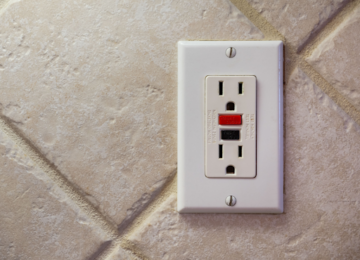When it comes to your home, it’s always worth considering how you can maximize the available space. One option you might consider is installing a bathroom in your basement. Whether or not this is practical depends on a few factors.
 The Simple Option
The Simple Option
A plumbing contractor will consider two key factors when evaluating the installation of a bathroom in your basement. The first is the depth of your plumbing, and the second is the size of your pipes. If your sewer line is deep enough, installing a bathroom in your basement can be relatively simple.
Alternatives
If your drainage isn’t deep enough for the system to operate on gravity, you need to explore other options. One alternative is a Saniflo toilet system, which uses pumps and macerators to grind waste and pump it up against gravity to your plumbing stack. Adding PVC pipes to your main stack allows you to run your basement bathroom.
Additionally, you can install a sink, shower, and toilet to a single pump and macerator, making it ideal if you are considering converting your basement into a guest bedroom.
Upflushing toilets are another option. They can be placed on top of concrete, so no excavation is required. Showers and sinks with a Saniflo Upflush system are also available if you prefer to avoid drilling into your concrete.

Installation Tips
To start, place the macerator/pump behind the wall framing before securing it to the floor. Leave some space between the pump and the wall for added insulation.
Next, install an outlet near the pump, within one foot of the access panel and facing the room. Be sure to check local building codes before doing this.
If the unit includes a shower and sink, these will need to be hooked up, and pump vents should be connected to existing vents. These systems don’t work with mechanical vents, so it’s important to use free-air vents.
After connecting the discharge tube, add a shutoff ball valve. This is crucial because if you need to remove the pump, this valve will prevent any backflow.
The discharge line can run horizontally for about 18 inches before turning vertically. Ensure that no other lines feed into the pump’s discharge line. If you have steel pipes, cut out a section and install a Y fitting.
Once this is done, set the toilet into position, connecting its flexible boot to the discharge port and securing it with zip ties. Finally, use bolts to lock the toilet in place, but be careful not to over-tighten them to avoid cracking the toilet.
While it’s possible to do this installation yourself, for the safest installation (and to ensure it’s practical), we recommend using our Handyside professionals to install your basement bathroom.
![Read This Before Adding A Bathroom To Your Basement When it comes to your home, it’s always worth considering how you can maximize the available space. One option you might consider is installing a bathroom in your basement. Whether or not this is practical depends on a few factors. The Simple Option A plumbing contractor will consider two key factors when evaluating the installation […]](https://handysideinc.com/wp-content/uploads/2024/05/Basement-Bathrooms-Are-They-Worth-It-1-750x420.jpg)




